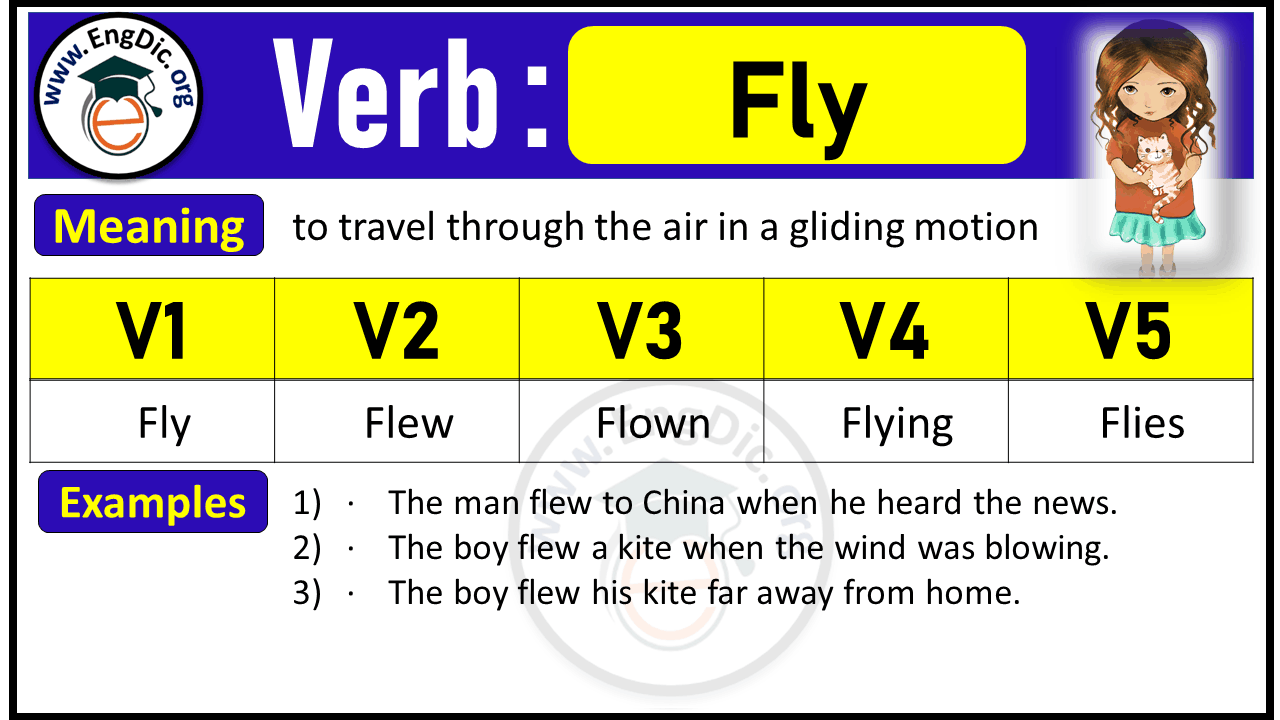Fly Past And Past Participle Form V1 V2 V3 V4 V5 Form of Fly
Are you eager to master the art of English verbs? Understanding the different forms of verbs can be quite a puzzle, but don’t worry, you’re not alone.
One verb that often leaves learners scratching their heads is “fly. ” Its various forms—V1, V2, V3, V4, and V5—can be confusing, yet they are essential for your English fluency. Imagine expressing yourself clearly and confidently without second-guessing your verb usage.
This guide is crafted just for you, to unravel the mystery of the past and past participle forms of “fly. ” With simple explanations and practical examples, you’ll soon fly through your sentences with ease. Keep reading to discover how this verb transforms and how you can use it to elevate your language skills.

Credit: www.youtube.com
Fly In Different Tenses
The verb flychanges in each tense. In the past, it becomes flew. For the future, use will fly. In present, it is just fly. These simple changes help us tell time. Tenses show when actions happen.
In continuous tenses, actions are ongoing. Present becomes is flying. Past changes to was flying. Future turns into will be flying. These forms show actions happening over time.
Perfect tenses show completed actions. Past perfect is had flown. Present perfect changes to have flown. Future perfect becomes will have flown. These forms tell us when actions were finished.
Perfect continuous shows actions ongoing and completed. In the past, use had been flying. Present becomes have been flying. Future changes to will have been flying. These forms tell us about actions over time.

Credit: engdic.org
Past And Past Participle Of Fly
Flychanges when we talk about past actions. The past form is flew. The past participle form is flown. These forms help us understand time in sentences.
Yesterday, I flewto the city. I have flownmany times. Both words tell when action happened. Use flewfor past events. Use flownwith have or has.
| Base Form (V1) | Past Form (V2) | Past Participle (V3) | Present Participle (V4) | 3rd Person Singular (V5) |
|---|---|---|---|---|
| Fly | Flew | Flown | Flying | Flies |
Forms Of Fly: V1 To V5
The verb flychanges in different forms. The base form is fly. This is called V1. The simple past form, or V2, is flew. The past participle form, V3, is flown. In V4, the continuous form is flying. This shows action happening now.
The V5 form is used for third person singular. This is flies. Each form helps in writing sentences correctly. These forms are important in English grammar. They change depending on the tense. Knowing them makes writing easier and better.

Credit: m.youtube.com
Conclusion
Understanding the forms of “fly” enriches your English skills. Practice these forms: fly, flew, flown, flying, and flies. It’s vital for clear communication. Keep this guide handy for quick reference. Consistent practice helps improve your language. English becomes easier with regular use.
So, explore more verbs and their forms. This strengthens your foundation. Remember, learning is a journey. Every step counts. With time, you’ll notice improvement. Enjoy your language learning adventure. It’s rewarding and fun. Keep flying high in your studies!






